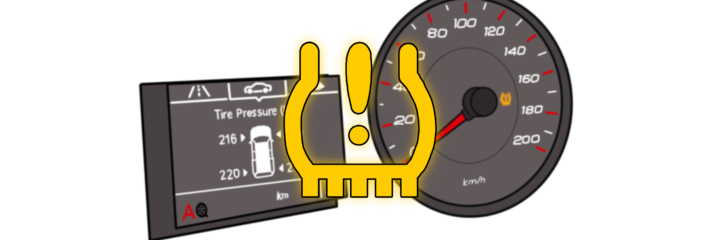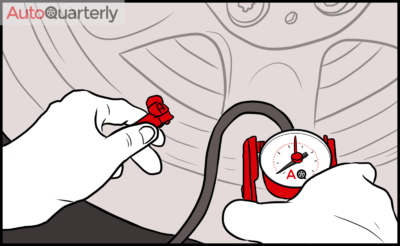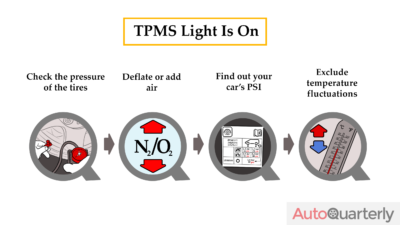You can get the “Tire Pressure Sensor Fault” indicator on your vehicle’s message center or information display. If that happens, it just means you’re being notified about a problem with your car’s Tire Pressure Monitoring System (TPMS).
What Is the Tire Pressure Monitoring System (TPMS)?
As the name implies, the Tire Pressure Monitoring System monitors the air pressure in pneumatic tires on various types of vehicles. It’s an electronic device that reports in real-time the car’s tire-pressure information. The driver receives this information via the vehicle’s message center or information display, either in the form of a pictogram, a gauge, or a warning light.
What Does the TPMS Do?
The TPMS measures air pressure in each pneumatic tire via a sensor mounted on the wheels. The driver gets the Tire Pressure Sensor Fault notification when the tire air pressure drops 25% below the manufacturer’s recommended level, depending on the vehicle’s type and model.
In the United States, Tire Pressure Monitoring System is mandatory for all vehicles made after September 2007. Also, it’s illegal in the United States to disable the Tire Pressure Monitoring System either for you or at the request of a customer.
Why Does Tire Pressure Monitoring Matter?
Why does it matter your car’s tire air pressure? Your vehicle tire air pressure is important as it is dangerous to drive on an underinflated or overinflated tire or tires. Driving with the wrong tire pressure can also damage the tires.
Unlike motorcycles, cars are not fitted with tubed tires. Cars come with tubeless tires with an inner core filled with pressurized air to match the car manufacturer’s recommended PSI (pounds per square inch). A number of problems can develop as a result of driving with tires with the wrong amount of air pressure.
What Happens if My Tires Have the Wrong Amount of Air Pressure?
An overinflated tire may pop, develop uneven wear on the tread, make the vehicle difficult to steer especially in hazardous driving conditions, decrease friction, and overall, shorten the tire’s life span. On the other hand, low tire pressure can lead to premature tire wear and failure.
An underinflated tire can decrease fuel economy, increase friction, blow out or explode, make the vehicle difficult to steer especially in hazardous driving conditions, cause the tread to separate, and overall, shorten the tire’s lifespan. Apparently, your car tire’s air pressure influences tire performance, handling, and tonnage capacity.
Paying attention to what your car’s TPMS has to say is important because you want to improve your tire’s lifespan, and you want your car to roll easier, enjoy optimal fuel economy, and increase water dispersion to prevent cases of hydroplaning.
My TPMS Light Is On. What Now?
So, what should you do if the Tire Pressure Sensor Fault indicator comes on? Check the air pressure in all four of your tires as soon as the TPMS indicators turn on. If the lights come on while you are driving, try to locate the nearest gas station and check the pressure of the tires.
After you’ve identified which of the tires have low or high air pressure, adjust accordingly by deflating or adding air until the manufacturer’s air pressure specification is achieved. Check your car to know your car’s manufacturer-specified PSI. The PSI information is usually provided on a sticker on the trunk or driver’s side door.
Take note that the TPMS indicators can turn on and off due to fluctuating temperatures.




